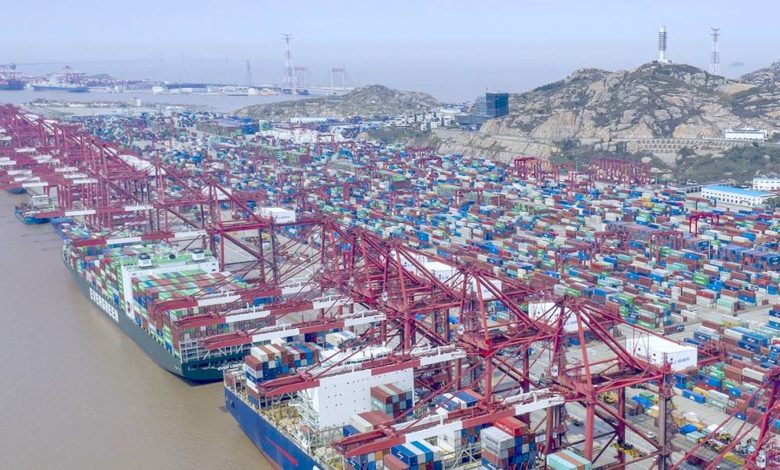No end in sight for Shanghai’s lockdown

China’s most-populous city has yet to give an indication of when lockdown measures will lift, fuelling greater uncertainty for those involved in global logistics.
Shanghai’s daily Covid-19 infections set a record for the sixth straight day on Thursday, as citywide mass testing identified 19,982 cases in China’s financial and commercial hub.
EU Chamber of Commerce in China members estimated yesterday that Shanghai port volumes are down by about 40% week-on-week, despite the port’s operator insisting that it is business as usual at Yangshan and Waigaoqiao thanks to a bubble working environment at the quayside.
193m people are now in lockdown across China
The issue, as has repeatedly been stressed since the lockdown came in 11 days ago, is down to limited trucking availability and the shuttering of many factories and warehouses. Many of the entry and exit points on the highways between provinces are also blocked causing severe supply chain issues.
Cargo volumes through the port tracked by FourKites, a supply chain data firm, had dropped by about a third since March 12 as shippers reroute freight elsewhere.
“The indefinite extension of the Shanghai lockdown is causing a significant slowdown of operations at the city’s major air and ocean ports due to labor shortages as well as a drop in the availability of goods as manufacturing and warehouses close, and trucking availability is significantly disrupted,” an update from online freight platform Freightos earlier this week stated.
Last week, a survey of American businesses in China found that 54% of respondents have lowered 2022 revenue projections for the year due to the latest Covid-19 outbreak. Among manufacturers, more than 80% reported slowed or reduced production, as well as supply chain disruptions.
An update from Japanese containerline Ocean Network Express (ONE) yesterday said that the limited trucking availability has impeded the clearance of import cargoes.
The resulting impact is that Yangshan and Waigaoqiao Phase 2, in particular, have “critically high” dangerous goods and reefer yards utilisations, ONE warned.
“Due to operational constraints in the yard side, there is a possibility that certain DG Classes and Reefers may not be allowed to discharge if the quantity cannot be accommodated,” ONE cautioned.
While Shanghai is hogging the headlines, the fallout from Beijing’s pursuit of a zero-Covid strategy is causing lockdown havoc across vast swathes of the world’s most populous nation.
Japanese bank Nomura estimated on Tuesday that a total of 23 Chinese cities have implemented either full or partial lockdowns, which collectively are home to an estimated 193m people and contribute to 22% of China’s GDP.
“These figures could significantly underestimate the full impact, as many other cities have been mass testing district by district, and mobility has been significantly restricted in most parts of China,” said Ting Lu, chief China economist at Nomura.
The lockdowns are taking their toll on the national economy. The China Caixin service PMI recorded the worst month-on-month contraction in March since early 2020.
Christian Roeloffs, the CEO of online marketplace Container xChange, described the situation in China as being akin to a traffic jam.
“Some people now stepped on the brakes really heavily and the problem is that this will lead to a significant sort of bulk up in demand for freight services which will essentially be unleashed once the factories reopen. And when the demand is back, the carriers will again not have enough equipment on the ground because not enough equipment went into China during the port lockdowns and not enough vessels are available,” Roeloffs said.

Again no mention of rail taking up the slack as trucking is seriously constrained. This is a major opportunity for the inter-modal rail operator to demonstrate capabilities and secure participation in traffic it previously could not compete for. The absence of a rail response echoes previous criticism of the rail operator in China and a failure to secure more traffic, revenue and profit.